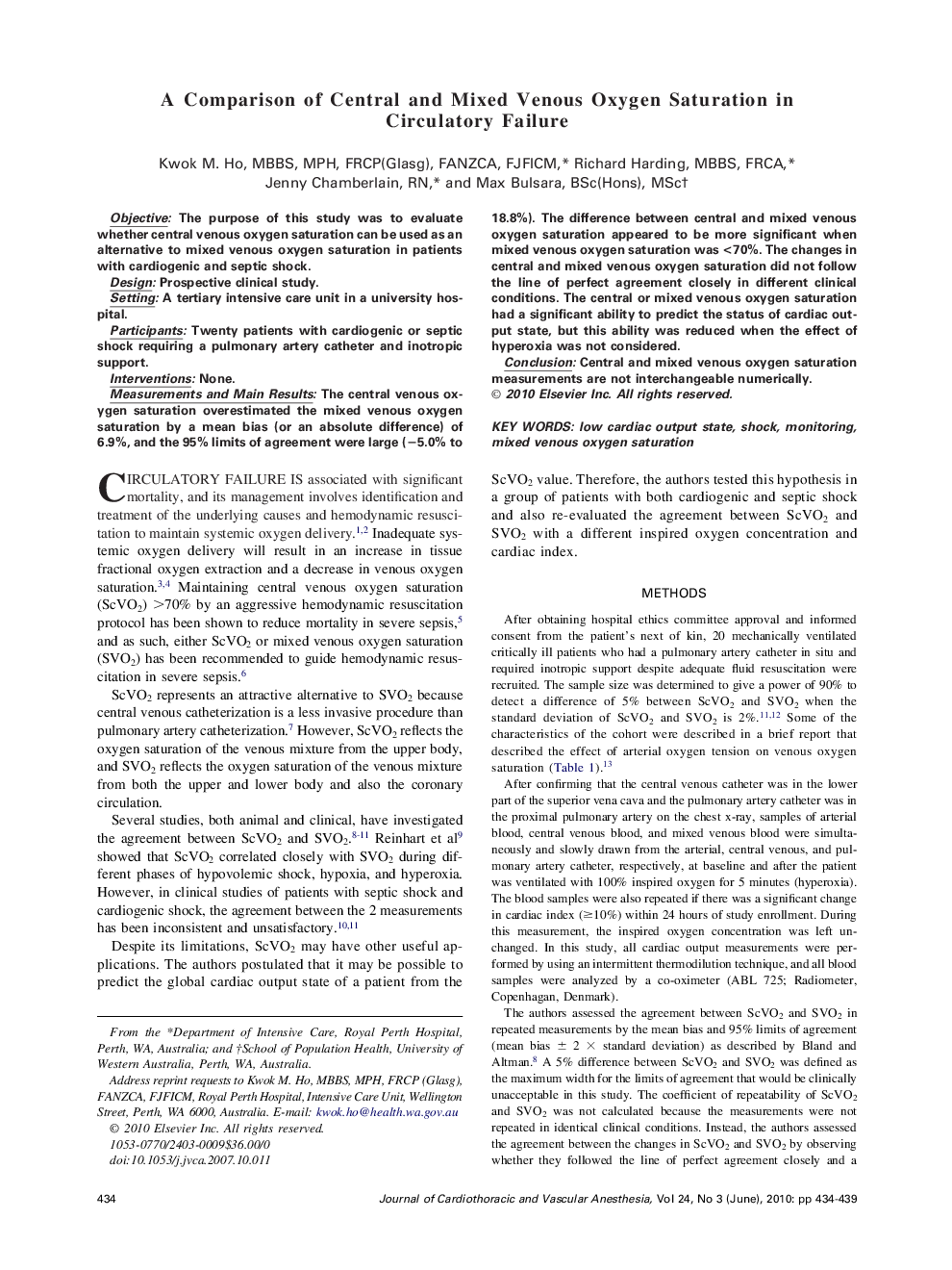| Article ID | Journal | Published Year | Pages | File Type |
|---|---|---|---|---|
| 2760442 | Journal of Cardiothoracic and Vascular Anesthesia | 2010 | 6 Pages |
ObjectiveThe purpose of this study was to evaluate whether central venous oxygen saturation can be used as an alternative to mixed venous oxygen saturation in patients with cardiogenic and septic shock.DesignProspective clinical study.SettingA tertiary intensive care unit in a university hospital.ParticipantsTwenty patients with cardiogenic or septic shock requiring a pulmonary artery catheter and inotropic support.InterventionsNone.Measurements and Main ResultsThe central venous oxygen saturation overestimated the mixed venous oxygen saturation by a mean bias (or an absolute difference) of 6.9%, and the 95% limits of agreement were large (−5.0% to 18.8%). The difference between central and mixed venous oxygen saturation appeared to be more significant when mixed venous oxygen saturation was <70%. The changes in central and mixed venous oxygen saturation did not follow the line of perfect agreement closely in different clinical conditions. The central or mixed venous oxygen saturation had a significant ability to predict the status of cardiac output state, but this ability was reduced when the effect of hyperoxia was not considered.ConclusionCentral and mixed venous oxygen saturation measurements are not interchangeable numerically.
